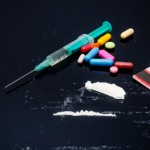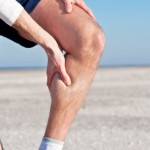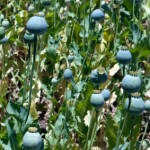In my last post I went through the history of medications used to treat pain and how one of those, originally a trademarked drug, became the terribly addictive, unfortunately popular, street drug, Heroin. Before I discuss controversies in the use of legal pain medicine we need to review some basic pharmacology and physiology.
The term opiate refers to chemicals extracted naturally from the opium plant with the most familiar being morphine and codeine. Opioids, on the other hand, are semi-synthetic derivatives of opium such as oxycodone and hydrocodone. These are controlled drugs, supposedly available only by a doctor's prescription.
In 2004 the FDA issued a statement on an extended release form of oxycodone called OxyContin approving its usage, but cautioning its potential for abuse. In 2009 an FDA panel voted (in a fairly close vote) that two combination pain pills be taken off the market. They were only the tip of the iceberg; there's a host of such mixes of an opioid with standard non-narcotic pain medicine such as acetaminophen (Tylenol) or acetylsalicylic acid (AKA aspirin) or even ibuprofen (Motrin). Oxycodone + acetaminophen is called Percocet and hydocodone + acetaminophen is marketed as Vicodin. A 2012 363-page summary (sic) report from HHS's FDA Center for Drug Evaluation and Research makes it clear that many of the earlier recommendations have still not been implemented.
The International Association for the Study of Pain has a shorter summary of the physiology of pain. I suppose it's intuitively true, but it certainly wasn't my first thought that pain is a protective mechanism. When I burned my hand on a hot stove as a child, I learned to avoid repeating the process (although I confess that hasn't been 100% successful). These days if I turn on a burner on my gas range, I also turn on its built-in light as a warning signal.
There's a part of our nervous system that warns us of pain (Med-speak for this is nociception from the Latin word nocere, to hurt). It's a separate section from the part that tells our brain of a pleasant smell, or a nice taste or other sensations that won't harm us. Some of our nerves end in nociceptors, unspecialized fibers that convert a number of unpleasant, potentially harmful stimuli into signals to our brain that shout (not literally), "Careful there; that's dangerous!" Nerve cell receptors, in simplest terms, are spots for chemicals to latch on to give signals.
In the 1960s and 70s, receptors for opiods were found in parts of the human nervous system. Some endogenous (produced in our bodies) chemicals can also bind there: two kinds of those are dopamine and endorphins.
Endorphins come in 20 or so types, are most commonly released in response to stress or pain and act to reduce our pain perception much as morphine does. In general they are not felt to lead to addiction or dependence (my only quibble with this statement is the "runner's high" as I vividly remember my Nephrology Fellow who ran 10 miles at a time, twice a day; when he got married his wife persuaded him to cut down to ten miles once a day). Eating chocolate, hot chili peppers and having sex can can cause endorphin release and acupuncture, message therapy and meditation are felt to also stimulate the levels of these beneficial chemicals.
When our cells are damaged, as in a bad sunburn, our peripheral nociceptors are activated by a variety of chemical substances that the injury produces or releases. At the same time other chemicals are released that dilate blood vessels in the affected area leading to swelling, redness, and a localized warmth. The resultant increase in local blood flow and inflammation itself promote healing and help protect the injured area against infection.
I think that's enough background; next I'll write of problems with pain pills.





